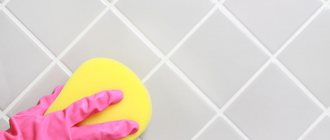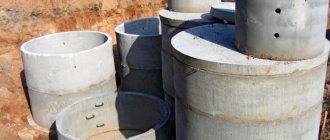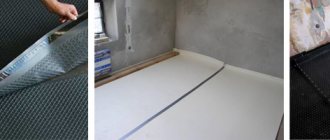Saving water in the household
Save water in the kitchen
- When washing dishes, be sure to turn off the water. Wash dishes in any containers with pre-filled water.
- If possible, buy and use dishwashers that have a special water-saving mode.
- If you have a new washing machine, then you can use fewer repeated “rinses”. Because new units wash dishes better than old ones.
- For clean water, use the same dishes, thereby eliminating the need to wash them again.
- Before washing pots and pans, be sure to soak them, this will significantly save time and water.
- Avoid defrosting food under running water; this will not only save water, but also make your food healthier. It is recommended to defrost food in the refrigerator; it will take longer, but will save money and make the food safe for your health.
- If you use special electrical appliances to heat water, then in this case it is recommended to use “instant heaters”, which are installed directly next to the washbasin. At the same time, you will save money on electricity.
- When preparing food, use as little water as possible. Nutritionists also recommend this.
- When preparing food, use pots of the right size.
- Water indoor plants with water that remains after washing vegetables and fruits.
- When purchasing kitchen appliances, choose “energy and water” economical models.
Saving water when washing
Washing dark clothes in cold water helps you save money, water, and the color of your favorite items. When buying washing machines, pay attention to models with economy modes. This will save your finances, water and electricity. If possible, use the water remaining after washing to water the trees and shrubs in your yard. When washing, use the washing machine's full load capacity.
Save water in the bathroom and toilet
- Use special “foamy” aerators for showering.
- Reduce your shower time by two minutes and you'll notice significant water savings per month.
- Use water-saving shower models.
- When brushing your teeth, do not forget to turn off the water.
- Turn off the water when lathering and washing your hair.
- Turn off the water when soaping your hands.
- Choose a 5-minute shower instead of a bath.
- Leaks in the toilet are the most invisible, and usually the most significant. Check the serviceability of the drain tank at least once a year.
- Put food coloring in the drain tank to help you detect water leaks.
- Use water-saving cistern models.
- Buy models of flush tanks that have several drain modes.
- Install water aerators on all taps.
- Use water-saving plumbing fixtures.
- Regularly check and perform preventative maintenance on the taps, shower and cistern.
Saving water and children
- Teach children to close taps tightly.
- Set an example for your children.
- Encourage the promotion of water conservation.
- Try to reduce the percentage of water toys for children.
- Repair the plumbing yourself with your children (boys).
- Don't forget to check your garden watering equipment.
Save water in your yard
- Make the soil in your yard moisture-retaining by using porous materials.
- Plant plants in your garden and yard that are most adapted to local conditions.
- Reduce the area of open lawns, plant more shrubs and “ground cover” crops.
- Use plants in your landscape that do not require a lot of water for watering.
- Leave the lower branches of trees and shrubs and do not remove fallen leaves - this will help retain water in the soil.
- Make a compost bin. The use of compost significantly increases the moisture-accumulating properties of the soil.
- Control weeds, they absorb a lot of water.
- Collect rainwater.
- Collect and use water from air conditioners for irrigation.
Water saving and lawn care
- Organize your irrigation system correctly.
- Taller grass retains water in the soil better.
- Choose the right combination of grasses for your lawn based on your local climate.
- “Aerate” the lawn, make small holes that will allow water to penetrate deep into the soil rather than flow down the top layer.
- Use the minimum amount of fertilizer required.
- Use an alarm clock to turn off watering your lawn and garden in time.
- Set up the irrigation system so that it does not water the asphalt.
- Water in the morning or evening.
- When watering, consider weather conditions.
- Use drip irrigation for trees and shrubs.
- Use sprinklers that produce low and large droplets.
- Perform regular maintenance on your irrigation system.
How to save water in the toilet and bathroom
Saving water in the bathroom is most important.
- Install special aerators with a “foaming” effect for showers.
- Between a bathtub and a shower stall, you should choose the latter, and it is desirable that the shower also has a resource-saving function.
- Try not to “cool off” for too long while standing in the shower. A reduction of at least 2 minutes will significantly save overall consumption.
- When brushing your teeth, shaving or washing your hands, turn off the tap.
- After lathering your head and body, turn off the shower for a while.
- Give preference to a 5-minute shower instead of a hot bath.
- The most significant, and at the same time the most invisible, leaks are in the toilet. Check the serviceability of the drain tank at least once a year.
- If you put the simplest food coloring in the tank, colored streaks will indicate a problem.
- Install water-saving cistern options.
- Choose a tank with a two-level drain system. Press 1 button and half the tank is drained, and press 2 buttons and the entire tank is drained.
- Do not throw napkins, paper, or other small debris down the toilet. This will not only reduce water consumption, but also prevent possible blockages.
Economical bathing: reducing consumption during hygiene procedures
How to purify and disinfect water during camping conditions
A significant portion of water consumption is in the bathroom, and the more people live, the more significant the water savings at home will be. Teach your household the following rules:
- Use a glass while brushing your teeth. One glass is enough to rinse your teeth, while scooping up water with your palms costs much more.
- Close the tap. Get used to turning off the water while soaping your face, hands, or shaving. The mixer flows 10-12 liters per minute, and while you are using a razor or washing off dirt, this water flows in vain.
- Take a shower. A shower instead of a bath is not only a way to save water in an apartment, but also a hygiene requirement. The volume of the bathtub is about 150 liters, while 50 liters is enough for the shower. Be sure to turn off the tap while soaping up to make your utility bills more enjoyable.
These rules should become a habit for all family members. At first you will have to control yourself, but over time it will become automatic, and you will notice that you involuntarily turn off the water even where you can not save.
Principles of saving water
It seems that saving water is quite simple: you just need to turn off the taps whenever you are not using water. However, when trying to adhere to such a regime in everyday life, failures often arise: either you don’t want to lose the set comfortable temperature, or your memory simply fails. After several such failures, the monthly payment again turns out to be high, and it becomes doubtful that such savings will achieve anything.
Unsuccessful attempts are a sign of fundamental errors when planning a saving regime. Here are some basic principles to follow:
- Awareness and voluntariness. All family members should understand why it is necessary to turn off the taps on time and apply other saving techniques. If someone begins to limit themselves, and someone ignores the rules of economy, the efforts spent will not bear fruit.
- Awareness. A water meter is your reliable assistant in the fight to save the family budget from overload. Introduce weekly reading checks into family practice and calculate the amount saved. This will clearly show the result of the efforts of all family members and will not let you forget for what purpose the system of self-restraint is used.
- Positive motivation. Introduce the practice of small financial incentives for all family members during the period when water consumption is reduced. Even a very modest gift given to yourself or loved ones will help lift your spirits and emphasize the importance of your efforts.
We recommend: Which magnets are afraid of water, and which ones can be washed without fear?
The main wish: it is necessary to achieve results without reducing the quality of life. The easiest way to save water is to stop washing your face, washing clothes or washing dishes. But for any reasonable person it is clear that such “simple solutions” are unacceptable, since their consequences are a bad mood, deteriorating health, and a decrease in life satisfaction.
The whole truth about illegal water saving in the apartment
How to bleach tulle at home: folk recipes and special chemistry
Regular increases in water tariffs make many people think about saving. Not all proposed methods are legal, and before you cross the line of the law, you need to know about the consequences of such an action.
How to save on water with a meter using a neodymium magnet
On the Internet, forums often give advice on how to save water using a neodymium magnet to rewind the readings of water meters. You need to know that it only acts on the impeller of the dry-running meter. There are many nuances in choosing the right magnet; different products are used for each metering device. In case of a selection error, its installation will either not give the expected results or will disable the meter. To install the magnet, you need to perform the following algorithm:
- Wrap it with cloth to prevent scratches and secure it to the body.
- Move the magnet slightly over the surface, observing the change in the water meter readings. Find the position in which the counter slows down or stops working altogether.
In addition to meters in apartments, common house meters are installed in each house. Utilities will notice discrepancies in readings within the first month
How else can you illegally save on water using meters without using a magnet?
You can stop the meter without a neodymium magnet:
- Blow air through the meter in the opposite direction. To do this, many craftsmen connect a vacuum cleaner to the mesh filter plug and thus rewind the indicators.
- Attach a small cross-section wire to the glass of the mesh filter in the direction of the liquid flow. Without special skills, you can significantly reduce the water pressure.
- The meter can be bypassed through the drain washer of the mesh filter. This is a rather labor-intensive method that requires considerable effort to return everything to its original position.
It's time to pay: how fines are calculated for illegally stopping the meter
During control checks, inspectors will definitely detect fraud with water consumption using the Teslameter device. These actions fall under the article fraud, and the perpetrator faces certain consequences:
- When using a magnet, the meter will fail due to demagnetization of the elements. Installation of a new meter will be carried out at the expense of the culprit;
- A fine will be issued to the guilty person. Its calculation is simple: monthly normalized water consumption will be increased 10 times and multiplied by 6 months;
- In case of repeated fraud, a criminal case will be opened. In special cases, the guilty person may receive a real sentence of 2 years.
The amount of the fine will significantly exceed illegal water savings
My history. What led me to strictly save water in my apartment?
Top 30 ways to clean stainless steel until it shines at home
Every month I find utility bills in my mailbox. When you look at these numbers, you immediately understand: that’s it, austerity! But no matter how you look at it, the next month you receive another receipt with the same or higher number.
Yes, every time I promised myself that when cleaning I would turn off the tap, that when washing dishes, if I needed to go somewhere, I would also close it. But somehow everything didn’t work out: either the water was too comfortable, I thought I couldn’t do the same, or I simply forgot. It seems like what’s wrong with this - it moved away for five minutes, all the water did not run away.
But the day came when I had to seriously think about saving. I got laid off at work and had to look for another one. She was found, but with a lower salary. Calculating the family budget, my husband and I came to the same conclusion - it’s time to save on something.
No matter how they guessed or decided, they settled on one thing - water! It is the easiest thing to save, it is for it that such incredible bills come. Water is something you can really save on without compromising your comfortable life. It is constantly becoming more and more expensive. After talking with my friends, I got some useful information about how easy it is to save water.
How to save water in an apartment
Using a dishwasher is considered the most convenient way to wash dishes - it saves time and effort. And without exception, all manufacturers claim that the dishwasher saves water. Let's check!
If the above advantages of using an eco-pedal over other methods of saving water in the kitchen were obvious, then here you will have to resort to calculations. And for clarity, let’s complicate our task: compare the costs of a dishwasher with the costs of washing dishes by hand without using an eco-pedal. You will see that even in this situation, using a dishwasher is not economical.
An average family of 3-4 people will accumulate enough dishes in a day to fill a dishwasher designed for nine sets.
To wash dishes by hand under a constant stream of water, as most people in the post-Soviet space do, it will take about 20 minutes and about 100 liters of water. In summer, the use of cold and hot water is approximately the same; in winter, much more hot water is required. To calculate monetary costs, let’s take Moscow indicators as an example: a cubic meter of hot water - 163 rubles, cold water - 33 rubles, sewerage - 23 rubles. We get the cost of water: 163*0.05+33*0.05+23*0.1=12.1 rub. A little detergent will be used - a package for a couple of months, of which about 1 ruble will be spent at a time. The energy costs for lighting the kitchen for 20 minutes will be insignificant.
Let's calculate the cost of a dishwasher
Modern dishwashers consume 10-13 liters of cold water and about 1 kWh of electricity per wash cycle. After 11 pm the electricity tariff is several times lower. By turning on the dishwasher before going to bed, we get the following numbers: 0.013*(33+20)+1*1.6=2.3 rubles. So far we see that there are clear savings. Now let's calculate the cost of detergents. The main ones are tablets or powder (gel is possible). You will also need rinse aid and salt. Tablets are more convenient, powder is cheaper.
A tablet, when purchased in a package, will cost from 15 to 20 rubles per piece. Rinse aid with tablets is not used; salt is recommended, but it is added in a minimal amount, so it can be neglected.
2.5 kg powder per package is approximately 600 rubles. Gel is more expensive - we don’t consider it. Recommended powder consumption is 25 grams per wash. The package is enough for 100 times. This means that the price of one wash is 6 rubles. A liter of rinse aid costs 250-300 rubles. On average, it is consumed 3 ml per wash. Therefore, the price for one cycle is 1 ruble. Dishwasher salt consumption is determined by water hardness. In Moscow, the water is usually soft; a kilogram of salt is enough for 50-100 cycles. Branded salt can be bought for 100 rubles. per kilogram, which is 2 rubles per washing cycle. But many people know that the dishwasher will not spoil if you use regular “extra” salt instead of branded salt. It is smaller and therefore washes out faster, but a tenfold difference in price will reduce the cost of one cycle to 60 kopecks or less. As a result, we get: 6+1+0.6=7.6 rubles.
COMPARISON RESULT:
Washing dishes by hand under a continuous stream will be slightly more economical than using a dishwasher with tablets. Using the powder will give you a profitable difference of about 1.5 rubles for each cycle - this is 500 rubles per year. But this is not at all significant considering the price of the dishwasher itself, which is difficult to find for less than 20 thousand rubles. It won't pay for it. Now reduce the cost of hand washing by half - because the eco-pedal reduces the water consumption for washing dishes by half.
CONCLUSION
- aerators create only the appearance of savings, and complex models of aerators require special operating conditions;
- touch faucets are inconvenient to use in the kitchen;
- Dishwashers do not save at all, if you take into account the high cost of special detergents.
Thus, the answer to the question of how to save water in an apartment becomes obvious. The best way to save water is an eco-pedal.
Water saving technology
Modern household appliances meet high standards and allow you to do work faster and better, using a minimum of resources. If you have long wanted to buy a dishwasher, or buy a new washing machine instead of an old one - do it! Rest assured, the money spent will soon pay off.
When choosing household appliances, pay attention to the number of liters consumed per wash cycle, and to which energy consumption class it belongs. The most economical specimens are class A, A+ or A++, the most wasteful are G
Among other things, the washing machine and dishwasher heat the water themselves during operation, which allows you to pay the minimum tariff.
Dishwasher
A good dishwasher uses 12-14 liters per wash cycle. cold water. The girl copes with the same number of plates and pans in 40 minutes, spending at least 120 liters. water, half of which is hot, and an impressive amount of detergent. It turns out that the car is about 10 times more economical than a housewife. Modern models have a half-load mode; if there are not many plates, the consumption for this program is 6.5 liters. From the depths of the machine you will get crystal-clean and dried dishes.
Washing machine
When purchasing such an assistant, do not forget to read the technical passport. Find out how much water the device uses for each program, find out how energy efficient it is and, based on this information, choose the appropriate model. Some of the most economical ones are Bosch WLG20265OE (36-40l), Samsung WF60F1R2F2W (35-39l), Hotpoint/Ariston AQS1D29 (34-40l).
Old Soviet-style machines could use up to 160 liters per load, and modern ones from 37 to 70 liters. along with rinsing. The average housewife will spend 5 kg washing by hand. linen 160-240 l. warm water and a few hours of time. A washing machine makes the housewife’s work easier and saves the family budget.
The most economical mode is “quick wash”; if possible, use it instead of the regular program.
The toilet is the main waste of water
Although toilets do not constantly flush water, they are the main source of water waste. We took this point into account and applied several methods to reduce such consumption.
- Replaced the water release button. We removed the original button and installed a new one - a double one. So one half helps drain only half of the tank, and the second half drains the entire tank. Conventional toilets flush 12 liters of water per flush. The double button makes it so that half of its contents flow out of the tank when flushed, that is, only 6 liters. For those who do not have the ability to replace the button: place a one and a half liter plastic bottle of water in the tank. The tanks have a cut-off valve that stops the tank from filling. A bottle of water will act so that the volume of water in the tank will become half as much. Thus, the cut-off valve will stop supplying water when there is only half of the tank.
Everyone knows when which button will be useful to them, so they can calculate the possible savings. But on average it will be 25 liters per day, and for the year 9125 liters.
- We have a new toilet, so there are no problems with it. This item is for those owners whose plumbing is no longer new. Carry out a complete inspection of the toilet cistern and eliminate all leaks. Even when water only drips quietly from the tank, this is a huge waste of water! With such droplets you will lose more than 50 liters of water per day. Accordingly, 18,250 liters of water per year will be paid for just like that.
Proven ways to save water in the bathroom
So, we decided to save on the bathroom initially.
- First of all, we installed a special water-saving nozzle on the shower. It's very inexpensive, but it really helps to use less water. What brought us to this decision? Information from the Internet. It clearly states how much water can be saved by installing such a nozzle. I will share the information with you too. With a regular nozzle, about 12 liters of water are spent per minute, and with a water-saving nozzle, only 5! This way, you can save a huge amount of water when taking a shower!
For example, you take a shower for 15 minutes, with a regular shower head you use 180 liters of water. And if you use a special dispersing nozzle, the amount of water used will be only 75 liters!
We have been using this shower head for two years now, the amount for water in the receipt has decreased by 15% with the help of this upgrade. We save more than 2,000 rubles a year on such a shower.
- Take a shower, not soak in the bathtub. This is also a very effective method. When taking a shower, we spend only 50 - 80 liters of water with a water-saving nozzle, and when filling the bath, we spend more than 150 liters. That's three times more. For me personally, such savings are not a problem, since for several years now I have only been taking a shower. I can lie in the bathroom when I want to warm up.
This type of saving allows us to save an average of 1,500 rubles per year.
- Turn off the water when not in use. These are moments in the shower when you shave or cleanse your skin with a scrub. These few minutes will give you serious savings.
In 5 minutes of shaving or applying a mask, more than 25 liters of water will drain down the drain. Using such procedures every day, you waste more than 9,000 liters of water per year. In my region, in monetary terms for the year, this amount will be about 500 rubles only for cold water.
- You can also save water while brushing your teeth. Turn off the tap after filling only one glass of water. This water will be enough to rinse your mouth of toothpaste. Thus, you will spend a maximum of 10 liters of water on washing, and not 50. This is also money. Moreover, we do not count the water resources spent per day, but per month.
I have a family of three. That is, we spent about 4.5 cubic meters of water per month on brushing our teeth and washing our faces as usual. And using a glass of water to rinse your mouth, you spend less than a cubic meter. In monetary terms, we began to pay 580 rubles per year for morning washing instead of 2000-2500 thousand.
- We installed a mixer with one lever for adjusting the water temperature. It was noted that when using a mixer with two wings, when adjusting the temperature, the water simply flows uselessly into the drain. Our money follows the water there too. It’s better to spend money on a faucet once than to constantly flush water down the pipe.
This mixer will help save water up to 8 liters per minute!
- A water heater was installed. Yes, this is again a cost in order to save money. Hot water costs many times more than cold water. Why pay more when you can pay less? Yes, a water heater is expensive, but it pays for itself quickly. There are still times when hot water needs to be passed through; many houses have this problem. This is when the hot food lasts for a long time and is barely alive, or when it has an unpleasant brown color. Another advantage of the water heater is that when the entire city is cut off from access to hot water in the summer and people have to wash themselves using water heated in a pan, we wash, as always, without inconvenience.
We calculate how much we save on such equipment per month and year. Hot water according to the tariff of the region in which I live costs 159 rubles per cubic meter. Cold - 49 rubles. According to the last meter readings, before the water heater was installed, it was written that we used 8 cubic meters of hot water and 6 cubic meters of cold water. In money it came out to 1,566 rubles. The next time we received a receipt, accordingly, there was only cold water consumption - 12 cubic meters, that is, 588 rubles. Electricity with the heater began to be spent by 500 rubles more per month (taking into account its shutdown for the time when no one is at home). That is, water for a month cost us 1088 rubles. We saved 478 rubles in a month, and more than 5,000 rubles in a year. Since we bought a water heater for 8,000 rubles, it paid for itself in less than two years.
- We hung a “reminder” for the child. This is a small poster in the bathroom that says you need to save water. Moreover, it helps not only the child, but also us not to forget about this nuance. As soon as I look at this inscription, my brain begins to rush me, and my hands quickly start lathering the washcloth! The savings are small, but still nice.
Bathroom: what can you come up with here?
The bathroom is another room where high water consumption is allowed. Periodic bathing, children's pranks with water while washing hands, frequent use of the washing machine - all this significantly increases the total amount in the monthly payment document. Fortunately, optimization can be achieved here too.
- An important step is replacing the old mixer or repairing the faucet axle boxes. The economic effect of this operation is no less than in the kitchen. An additional step is to install a sprayer on the faucet.
- Optimizing hygiene procedures also helps reduce the number on your bill. Taking a shower instead of a bath, brushing your teeth and shaving with a glass of water rather than with a running stream, and stopping children's pampering can achieve savings of 40–50%.
- Optimizing the laundry regime also gives good results. If you don’t turn on the machine half-empty and don’t use long washing modes unnecessarily, it’s quite possible to use only 600 liters of water per month instead of 1000–1100.
We recommend: Separating cream from milk with your own hands
Of course, creating a habit of saving water will require certain volitional efforts and emotional costs. But the result of such work is not long in coming.
Water-saving shower head: does it really help?
An effective solution to the problem of saving water is an aerator installed on the shower to save. An ordinary shower head, depending on its design, flows from 1 to 12 liters of water in 60 seconds. This means that a ten-minute shower will waste 100–120 liters.
Manufacturers of economical shower sprayers claim that such devices spend no more than 5 liters per minute. Operating experience shows that real savings, if they do not reach such optimistic indicators, differ from them insignificantly. Saving 40 liters out of every 100 liters is a tangible effect that quickly pays for the purchase of a special nozzle.
Equipment and gadgets: saving with the times
You will have to look for help in optimizing costs in household appliances and plumbing stores, where you will be offered many ways to reduce water consumption, while significantly simplifying your life.
Economical faucets: how to choose the right one
Leading manufacturers of sanitary ware come from Europe, where saving water in everyday life is commonplace. The engineers of these companies are constantly coming up with new improvements, thanks to which faucets consume less water without human intervention. Take advantage of the achievements of technical thought:
- Single lever mixers. A significant amount of water is wasted while you adjust the optimal temperature for yourself by turning the valves. In single-lever faucets, temperature and pressure adjustments are performed in one movement, significantly speeding up the process.
- Thermal mixers. In such models, saving water is even easier - you simply set the desired temperature, and the tap does everything itself. Adjusting the water takes no time at all, and thanks to the SafeStop function, the water will never be too hot.
- Touch faucets. An ingenious invention that is widely used in public places where there is no one to think about saving. Water flows only when hands are brought to the tap, and its temperature is set in advance. The pleasure is not cheap, but it will definitely pay for itself in the long run.
- Smart manufacturers have discovered that single-lever faucets tend to use the center lever position. Even when a person does not need hot water, he simply opens the tap in the set middle position. Therefore, in faucets with the CoolStart option, the middle position is always cold water, which reduces the consumption of more expensive hot water.
- Shower head. Huge watering cans with many modes are extremely wasteful, and a tropical shower flows more than 50 liters per minute. Replace the shower head with a simple model of a small area with small holes - this will not affect the quality of washing, and will significantly reduce water consumption.
- Water limiters. A standard faucet is equipped with a nozzle that has many small holes, like in a shower head. Thus, even with maximum opening, the tap is not able to let through as much water as without a limiter. This nozzle is less convenient than an aerator, but still allows you to save money.
- Aerator. A faucet attachment that saves water up to 50%. The principle of operation is very simple: when a jet passes through a cone-shaped constriction, increased pressure is created, due to which the nozzle sucks in air. It mixes with liquid, and at the exit you get water foam, 2/3 consisting of air. The stream remains the same volume, so you don't notice the difference, but your minute-to-minute water consumption drops.
Don't trust marketers
All separately offered attachments work on the same principle, so if you already have a normal faucet with an aerator, no upgrades are required.
Household appliances to save money
Household chores become much easier when the housewife has help in the form of household electrical appliances. If you add to this the water savings, then their purchase becomes completely justified. The family budget is protected by:
- Dishwasher. During 1 operating cycle, it consumes from 9 to 15 liters of water, which flows out of the tap in just a couple of minutes. Keep in mind that we are talking about cold water, in which you are unlikely to wash. Whether a dishwasher saves water depends on how well you use it, so don't run the dishwasher just for a couple of dishes, but wait until it takes a year to get a full load.
- Washing machine. Your constant assistant, who will spend 40-50 liters to wash 5 kg of laundry, and this will also be cold water. To maximize savings, always run the wash only with a full load and choose a mode without additional rinsing, giving preference to phosphate-free powders.
When purchasing equipment, pay attention to the water consumption indicated in the device passport. Consider the size of your family, because if there are 5 people living in a house, a 6-set dishwasher will have to be run several times a day, and a washing machine with a 4-kilogram load will run every other day
An illegal way to save water
Having considered legal ways to save, we can come to the conclusion that the amount of water charges will not change much. In such cases, you have to resort to using illegal methods of saving, namely:
- Using a magnet is the main and, in fact, the only illegal method, which entails a huge fine. For the most part, using a magnet in the meter results in huge water savings. But using a magnet will get you into big trouble.
- Various devices. At the moment, there are a huge number of different devices, which, as their creators assure, do an excellent job of saving water. The use of such devices can lead to various consequences with your meter and further fines, so their use is highly not recommended.
Remember, the system cannot be fooled. Organizations have had a computerized accounting program for a long time. There, subscribers whose water consumption suddenly became much less than it was before are marked in red. Not only statistics are taken into account, but also the number of people registered in the apartment. This means that the verification will not take long. By manipulating a magnet, you force respectable citizens to pay for themselves. Be smart and learn to save water legally.
Let replacing faucets, installing a dishwasher or replacing an old washing machine with a new one allow you to save a little less water than using a magnet or various appliances, which cause more troubles than positive aspects. However, the choice is yours!
Features of water saving in European countries
In European countries, saving water is already a feature of the mentality. This is due not only to high tariffs for the service, but also to concern for the environment.
The most popular measures among EU residents are:
- taking a shower instead of a bath;
- reducing the duration of hygiene procedures;
- turning off the water when soaping, brushing teeth;
- purchasing economical dishwashers or washing and rinsing dishes in one container;
- use of neutral dishwashing detergents;
- full load of dishwasher and washing machine;
- washing in a communal laundry instead of individual machines;
- recycling water (for example, for watering plants, washing cars), installing wastewater treatment systems;
- collecting rainwater for watering lawns and flower beds, cleaning cars.











